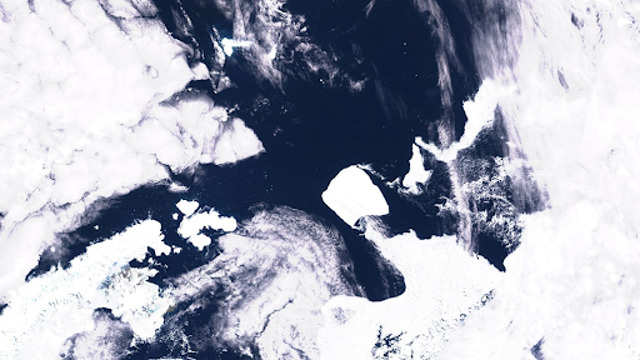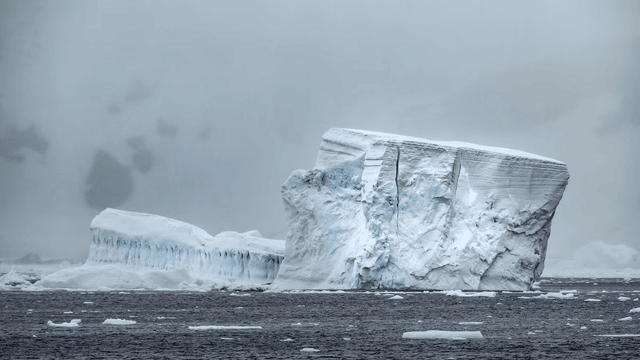
A satellite captured an image of the A23a iceberg in Antarctica in November 2023. CNN
The world’s largest iceberg, A23a, has begun moving again after being stuck in the same spot for months. Scientists from the British Antarctic Survey (BAS) have been carefully tracking the iceberg, which spans an impressive 3,672 square kilometers (1,418 square miles)—a size slightly larger than the state of Rhode Island.
A23a, which calved from the Filchner-Ronne ice shelf in 1986, has had quite the journey. After breaking off from the shelf, it became grounded on the floor of the Weddell Sea in Antarctica, where it stayed for over 30 years. Scientists believe it remained stuck due to its size and weight, but over time, it shrank just enough to free itself from the seafloor.
Once it broke free, the iceberg was carried by ocean currents, but it soon became stuck again in a Taylor column. This phenomenon happens when ocean currents hit an underwater mountain, creating a spinning vortex of water that traps the iceberg. However, A23a has now managed to break free once again and is on the move, drifting through the Southern Ocean toward warmer waters.
Scientists believe the iceberg will eventually head toward the remote South Georgia island, where it is likely to break up and melt. Despite the fact that this iceberg won’t contribute to rising sea levels, scientists are closely monitoring its movements. Icebergs like A23a, while impressive in size, don’t directly affect sea levels. However, the melting of ice shelves and glaciers in Antarctica is a different matter, as these processes are linked to global sea-level rise. This is where climate change has raised concerns.
A23a has held the title of the largest current iceberg several times since the 1980s, with a few larger, but shorter-lived icebergs like A68 and A76 briefly surpassing it. As the iceberg continues its journey, scientists are studying its impact on the surrounding environment, particularly in how the melting ice influences the ocean's carbon and nutrient cycles.
One of the interesting aspects of the iceberg's journey is the way it can provide nutrients to the waters it passes through. Laura Taylor, a biogeochemist at BAS, explained that icebergs like A23a can help create thriving ecosystems in waters that would otherwise be less productive. Scientists have collected samples from the waters surrounding the iceberg to study how life forms around it and how it impacts carbon levels in the ocean and its balance with the atmosphere. These studies could offer valuable insights into the ways icebergs affect ocean ecosystems and the larger global climate system.
As A23a drifts through the Southern Ocean, it continues to serve as both a scientific curiosity and a reminder of the shifting dynamics in Antarctica, where climate change is having significant and potentially far-reaching effects.















